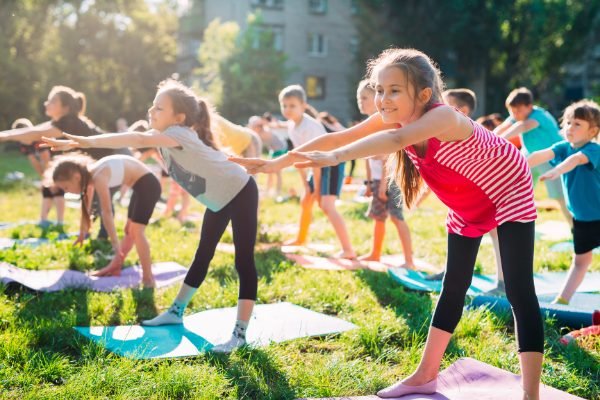In the bustling hallways and classrooms of modern schools, the focus often falls heavily on academic achievement. While academic excellence is undoubtedly important, there’s a growing recognition of the need to nurture students’ overall well-being. Enter yoga—a practice that holds immense potential to benefit students in numerous ways. Here’s why integrating yoga into school curricula is not just beneficial but essential:
1. Stress Reduction and Mental Health Support
Students today face unprecedented levels of stress, whether from academic pressures, social challenges, or personal issues. Yoga offers invaluable tools for stress reduction, promoting mental clarity, and emotional resilience. By incorporating mindfulness practices and relaxation techniques into the school day, students learn to manage stress effectively, leading to improved mental health outcomes.
2. Physical Health and Wellness
In an era of increasingly sedentary lifestyles, physical activity is crucial for maintaining optimal health. Yoga provides a gentle yet effective form of exercise that promotes flexibility, strength, and balance—all essential components of physical wellness. By introducing yoga into schools, educators can instill healthy habits early on, fostering a lifelong commitment to physical well-being.
3. Improved Concentration and Focus
The practice of yoga emphasizes breath control, concentration, and mindfulness—all of which are beneficial for cognitive function. Studies have shown that regular yoga practice can enhance attention span, memory, and overall cognitive performance. By integrating brief yoga sessions into the school day, educators can help students sharpen their focus and optimize their learning potential.
4. Social and Emotional Learning
Yoga fosters social and emotional learning by encouraging self-awareness, empathy, and compassion. Through group activities and partner poses, students learn to collaborate, communicate, and support one another. These skills are essential for building positive relationships, resolving conflicts, and thriving in diverse social environments.
5. Cultivating Resilience and Coping Skills
Life is full of challenges, and resilience is the key to overcoming adversity. Yoga teaches students to embrace discomfort, persevere through difficulties, and adapt to change with grace. By practicing yoga, students develop resilience and coping skills that serve them well beyond the classroom, empowering them to navigate life’s ups and downs with confidence and resilience.
6. Inclusivity and Accessibility
Yoga is a versatile practice that can be adapted to suit individuals of all abilities and backgrounds. It offers a non-competitive, inclusive environment where every student can participate and succeed. By embracing yoga in schools, educators create an inclusive space where all students feel valued and supported, regardless of their physical fitness or previous experience with yoga.
7. Lifelong Habits for Well-being
Introducing yoga in schools lays the foundation for lifelong habits that promote holistic well-being. By familiarizing students with yoga at a young age, educators empower them to incorporate these practices into their daily lives, supporting their physical, mental, and emotional health well into adulthood.
In conclusion, integrating yoga into school curricula offers a multitude of benefits, including stress reduction, physical health promotion, improved concentration, social and emotional learning, resilience building, inclusivity, and lifelong habits for well-being. By embracing yoga in schools, educators can nurture students’ holistic development, laying the groundwork for success in both academics and life.


